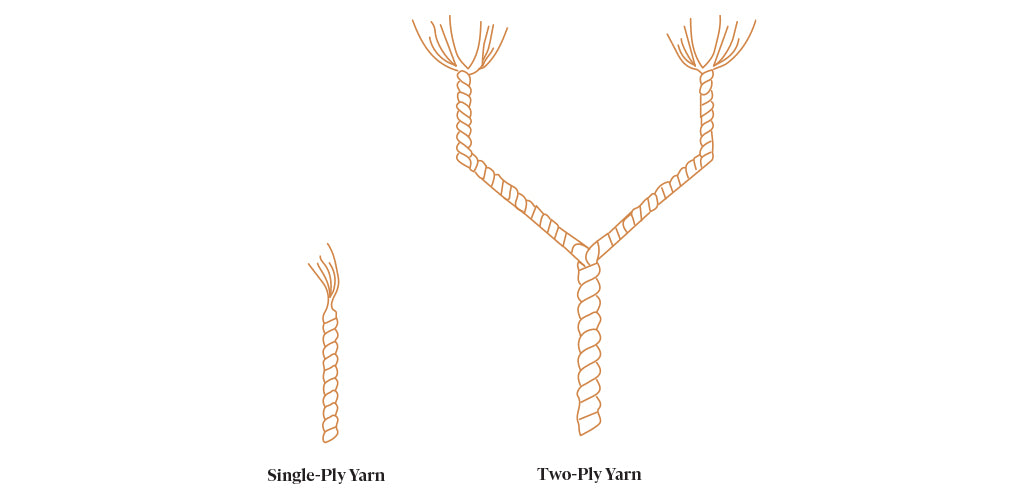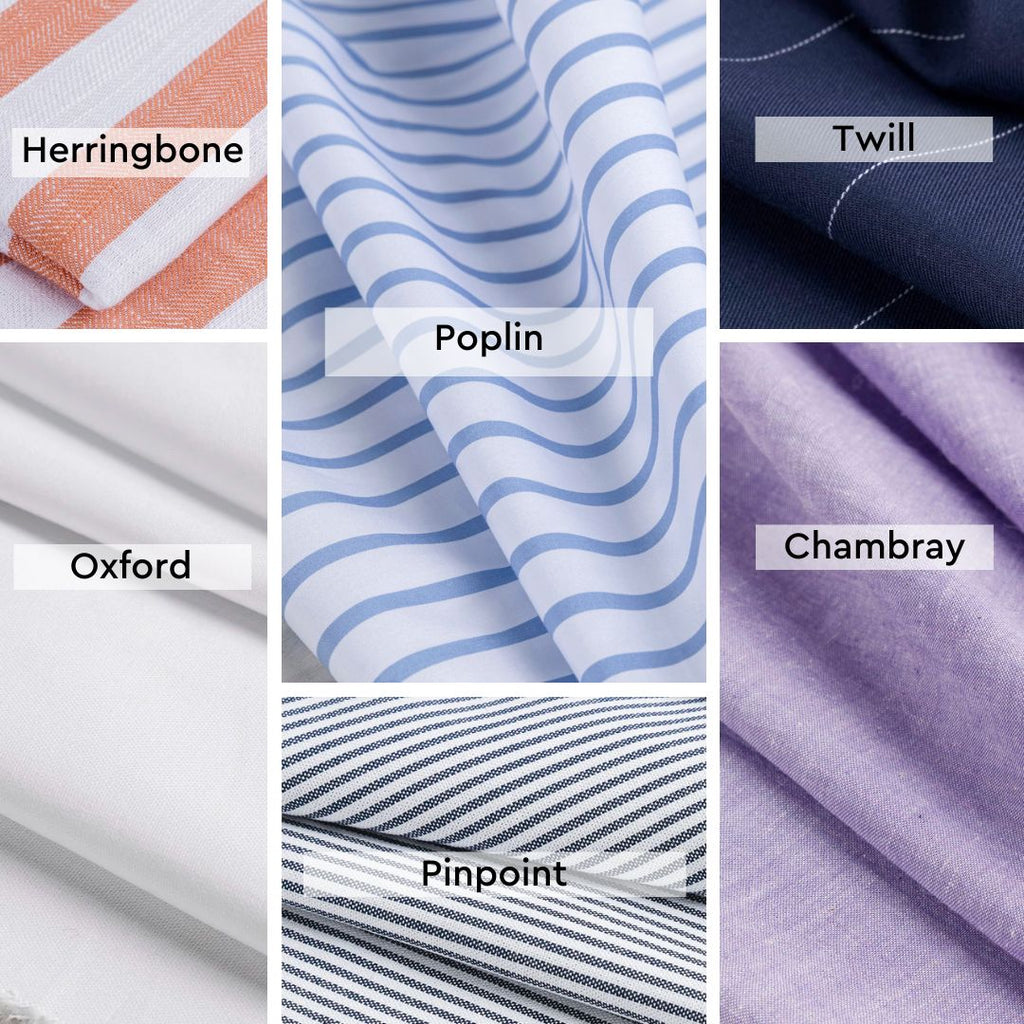Shirtmaking Essentials: Understanding Shirting Fabrics & Tools to Sew the Perfect Shirt

Have you ever wondered what makes a great shirting fabric? What exactly is ply and thread count? Which interfacing and sewing tool do you need to make that perfect sharp collar? Welcome to our shirtmaking guide, where we'll explore the secrets behind sewing impeccable button-ups and button-downs. We will cover everything from selecting your shirting fabric to demystifying ply and thread count and supplying you with all the necessary tools for your shirtmaking journey.
What is a Shirting Fabric?
As the name suggests, a shirting fabric is specifically designed for making shirts. It is characterized by features such as durability, breathability, and comfort which are essential for clothing worn close to the body, particularly in warm weather or in professional settings where a shirt is part of formal attire. Shirting fabrics are available in different materials, weaves, and weights to suit different preferences and occasions. Common natural fibres used in shirting fabrics include cotton, linen, and sometimes silk or wool.
Cotton: The Timeless Champion
Cotton reigns supreme as the preferred choice for shirts. Renowned for its comfort, breathability, and easy maintenance, cotton fabric effortlessly blends style with practicality, making it a perennial favourite year-round.
But not all cotton shirting is created equal! Let's delve into the realm of some of the finest cottons: Egyptian, Sea Island, or American Pima cotton. These are referring to the type of cotton, not the weave itself. All three types come from the same plant, Gossypium Barbadense, and have "extra-long staple length" fibres, which produce finer and stronger yarns. Egyptian and American Pima cotton are seen as premium luxury materials and are more commonly found, while Sea Island cotton is quite rare. Egyptian cotton, especially the "Giza 45" variety, is prized for its ability to produce very fine and durable yarns.
Our new luxurious striped poplin shirting features MEANDER 71, a high-quality Turkish long-staple cotton developed in partnership with the Cotton Research Institute of Türkiye. It offers a level of quality and elegance on par with Egyptian Giza cotton.
Linen: The Cool Elegance
Made from flax fibres, linen embodies cool elegance. Its exceptional breathability and laid-back charm make it a go-to choice for warm-weather clothing, even though it tends to wrinkle—a minor inconvenience compared to its breezy sophistication.
Ply and Thread Count Demystified

Understanding ply and thread count is important when assessing the quality of fabric used in shirt-making. Ply refers to the number of yarns twisted together to form a single thread. Two-ply fabrics have enhanced strength and durability. Thread count is usually an indicator of fabric smoothness. A higher thread count signifies superior quality and comfort.
An Array of Shirting Fabrics

There's a wide variety of shirting fabrics, each with its unique qualities. Here are some of our favourites:
| Oxford Cloth | Known for its distinctive basket weave texture, Oxford cloth like our Cotton Oxford Shirting offers exceptional durability and wrinkle resistance, making it perfect for all-day wear. |
| Poplin | With its lightweight and smooth texture, Poplin like our Luxe Striped Cotton Shirting boasts a crisp feel and silky surface, ideal for staying cool on hot days. Though similar to broadcloth, Poplin stands out with its varying weight yarns in the warp and weft. |
| Herringbone | Characterized by its V-shaped pattern, Herringbone fabric like our Yarn Dyed Striped Herringbone not only offers visual appeal but also durability, ensuring longevity and resilience against frequent wear. |
| Twill | Twill shirting like our Yarn Dyed Cotton Shirting Twill boasts a diagonal weave, ranging from subtle to pronounced, with a slight shine and softness that drapes effortlessly. While not as crisp as broadcloth or Poplin, Twill is easier to iron and less prone to wrinkles. |
| Pinpoint | Featuring a tight weave, Pinpoint shirting fabric offers a subtle texture that adds depth and dimension. Its substantial weight provides durability without feeling heavy. |
| Chambray | A plain weave fabric similar to Poplin, Chambray like our Yarn Dyed Handwoven Khadi Cotton Chambray distinguishes itself with heavier yarns and an inconsistent colour due to white threads in the weft. |
| Seersucker | Renowned for its puckered appearance, which is created in the finishing of the fabric, seersucker shirting fabric promotes airflow, making it exceptionally comfortable for summer wear. |
Our Favourite Shirt Sewing Patterns

- Jenna Shirt by Closet Core: Nothing compares to the iconic oversized menswear-inspired shirt, and Jenna ticks all the boxes. Perfectly proportioned with polished and classic shirting details, Jenna is the ultimate shirt pattern.
- Harrison Shirt by Cashmerette: A fitted button-down shirt designed with double princess seams for a uniquely curve-friendly fit, Harrison embodies all the classic shirt features.
- Kalle Shirt by Closet Core: With its loose, body-skimming silhouette and many interchangeable features, the Kalle Shirt epitomizes chic, easy dressing.
- Archer Shirt by Grainline: A loosely fitted button-up shirt with long sleeves, the Archer Button-Up offers a timeless and versatile addition to any wardrobe.
Essential Tools for Shirt-making:

- A sleeve board is a narrow ironing board explicitly designed for pressing sleeve and pant seams or other narrow openings, ensuring crisp and professional results.
- A collar-turning clamp or a point-turner is super handy for achieving sharp, well-defined collar points, cuffs and turning corners with ease.
- For flawless buttonholes, apply a drop or two of Fray Check to the uncut buttonhole after stitching, then use a buttonhole cutter to open the buttonhole cleanly and precisely every time.
- An expanding sewing gauge + buttonhole spacer is a versatile tool which allows you to create evenly spaced sections on fabric, perfect for determining buttonhole locations and achieving uniformity on your shirt.
- Choose lightweight, non-woven interfacing to add stability and crispness to collar, cuff, and placket areas, ensuring they maintain their shape and structure throughout wear.
- While button selection ultimately comes down to personal preference, it plays a crucial role in shirt design. We recommend choosing standard 16 mm (5/8 inch) buttons with four holes, like our durable corozo nut buttons. Renowned for their longevity and timeless charm, they add a touch of elegance to any shirt.
With these shirting insights and handy tools, you're all set to dive into your shirt-making adventures with confidence, crafting beautiful button-up shirts every time. And if you're unsure about the difference between a button-up shirt and a button-down shirt, check out the collar. A button-down shirt is a specific type of button-up shirt with small buttons on the points of the collar, which fasten the collar to the shirt's body. So while all button-down shirts are button-up shirts, not all button-up shirts are button-down shirts!

